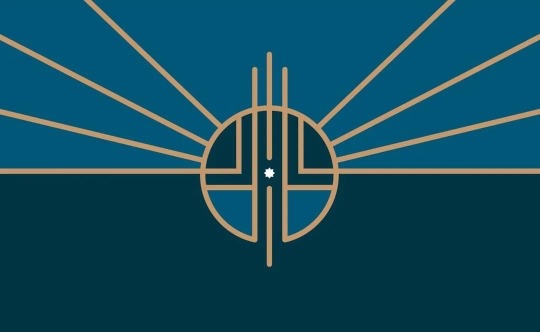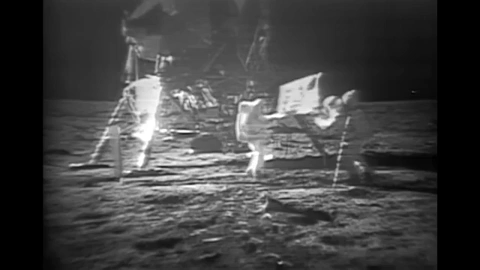A pseudorandom collection of unusual flags, both real and fictional.
Don't wanna be here? Send us removal request.
Photo

Utah wrapped up a flag redesign effort last month, and this was the result. All the entrants were pretty solid, but I have to say the winner here is quite modern and distinctive. This flag will become the official flag of the state on March 9, 2024.
2 notes
·
View notes
Photo


Fun fact: Roman Mars’s feature in his TED Talk did successfully shame Pocatello, Idaho into getting a better flag.
1 note
·
View note
Text

City flag of Lincoln, Nebraska, USA
It was just adopted in January 2021 through a contest.
The winning design, entitled All Roads Lead to Lincoln, was created by Ed Mejia, a local art director and graphic designer who immigrated to the United States from El Salvador. His design was inspired by the sight of Lincoln’s skyline emerging on the otherwise flat horizon as he first drove into town. He drew inspiration from art deco architecture and native artwork displayed inside the capitol building and used intersecting lines to capture the interconnection of technology, agriculture, and commerce that have drawn people to Lincoln throughout our past, present, and into the future. The beacon featured in the center of the design symbolizes the hope and optimism that the people of Lincoln are known for, as well as our reputation as a safe harbor for those seeking to make our community their home. - Lidia Spaw Hassell
53 notes
·
View notes
Photo

Flag of Maryland-in-Africa, one of the precursors to Liberia
from /r/vexillology Top comment: It was called Maryland-in-Africa? What the actual hell
44 notes
·
View notes
Photo

True South, an Antarctic flag designed in Antarctica, will fly across the continent this summer. (Description in comments)
from /r/vexillology Top comment: From the website ( https://www.truesouthflag.com/ ): Horizontal stripes of navy and white represent the long days and nights at Antarctica’s extreme latitude. In the center, a lone white peak erupts from a field of snow and ice, echoing those of the bergs, mountains, and pressure ridges that define the Antarctic horizon. The long shadow it casts forms the unmistakable shape of a compass arrow pointed south. Together, the two center shapes create a diamond, symbolizing the hope that Antarctica will continue to be a center of peace, discovery, and cooperation for generations to come.
72 notes
·
View notes
Photo

Flagmap of Territories and Provinces of Canada [3024 x 2517] [OC]
from /r/vexillology Top comment: !wave
8 notes
·
View notes
Photo

Extra-realistic flag: Ukraine
from /r/vexillology Top comment: Literally in the wild
82 notes
·
View notes
Photo

Moonshot Flag inspired by this picture
from /r/vexillology Top comment: Very light shades of colour, which is good. I would have brought the crescent moon to the front, though.
128 notes
·
View notes
Photo

Nordic Crosses are for chumps. Now, Greenland and Saami circles, that’s fresh!
from /r/vexillology Top comment: The Norway flag with the line intersections is really satisfying.
204 notes
·
View notes
Text

Stars and Stripes // Nodes and Edges
edges indicate shared borders. graph theory is good.
209 notes
·
View notes
Photo

Serapis Flag
The Serapis Flag is an unconventional form of the United States flag dating back to the American Revolution.
On 23 September 1779, Captain John Paul Jones of the Continental Navy attacked the British Naval vessel Serapis near Flamborough Head, Yorkshire as part of a general Franco-American campaign of naval interference. In the course of the battle, Jones captured the Serapis, while his own ship Bonhomme Richard began to sink.
Jones set sail for port in the Dutch United Provinces, which was nominally neutral but tended to support the Americans. British representatives at the port argued that Jones was a pirate, as he was not flying any known national flag.
Based on descriptions of the US flag circulating in Europe, the Dutch authorities recognized the flag above as that of the United States. A sketch dated 5 October 1779 titled “Serapis” survives to this day.
Misperceptions about the correct flag design were common; Benjamin Franklin as Ambassador to France described the flag as such:
It is with pleasure that we acquaint your excellency that the flag of the United States of America consists of thirteen stripes, alternately red, white, and blue; a small square in the upper angle, next the flagstaff, is a blue field, with thirteen white stars, denoting a new constellation.
At that time, the more conventional construction had already been dictated by the Continental Congress. Franklin made no mention of the number of points on the stars. The Serapis flag, almost uniquely, uses eight-point stars.
4 notes
·
View notes
Text
They Put a Flag on the Moon

It’s 1969 and Apollo 11 astronauts Buzz Aldrin and Neil Armstrong are the first humans to land on the Moon. In now iconic footage, Aldrin and Armstrong carefully assemble and maneuver an American flag to place on the lunar surface. The fabric unfurls, staying suspended without any wind to animate the stars and stripes. The flagpole sways precariously as the crew work to anchor it in the Moon’s low gravity at just 1/6th that of Earth’s. How did this moment come about? On Flag Day, let’s dive behind-the-scenes of what led to getting the American flag on the Moon 50 years ago.

Image: Astronaut Buzz Aldrin poses for a photograph beside the deployed United States flag during the Apollo 11 mission.
Seeking to empower the nation, President John F. Kennedy gave us a grand charge. The human spaceflight program of the early 1960s was challenged to work on missions that sent humans to the surface of another world. Following President Kennedy’s death in 1963, President Richard Nixon stressed a more international perspective to the Apollo missions. To reconcile the need for global diplomacy with national interests, we appointed the Committee on Symbolic Activities for the First Lunar Landing.

Image: NASA Administrator Thomas Paine and President Richard Nixon are seen aboard the USS Hornet, Apollo 11’s splashdown recovery vessel.
The committee, and the U.S. at large, wanted to avoid violating the United Nations Outer Space Treaty, which prohibited any nation from taking possession of a celestial body. After some debate, they recommended that the flag only appear during the Apollo 11 spacewalk. A plaque would accompany it, explaining that the flag was meant to stand for peaceful exploration, not conquest.

Image: The plaque reads “Here men from the planet Earth first set foot upon the Moon July 1969 A.D. We came in peace for all of mankind.” Under the text are signatures by President Nixon, Buzz Aldrin, Neil Armstrong, and Michael Collins.
A team of engineers at Johnson Space Center had three months to resolve several issues regarding the flag’s assembly. First, was the Moon’s lack of atmosphere. The flag, quite literally, could not fly the way it does on Earth. To address this, a horizontal crossbar was added to support the flag’s weight and give the illusion of it waving.

Image: NASA technician David L. McCraw shows the flag next to a Lunar Module mockup.
Second was the flag’s assembly, which had to be as lightweight and compact as possible so as not to take up limited storage space. The completed package, which was attached to Lunar Module’s ladder, weighed just under ten pounds. It received an outer case made of steel, aluminum, and Thermoflex insulation and blanketing to shield the flag from the 2,000 degree Fahrenheit spike from the Eagle’s descent engine.

Image: Component pieces of the flag assembly.
The last issue was mobility. Bulky spacesuits significantly restricted the astronauts’ range of motion, and suit pressurization limited how much force they could apply. To accommodate these limits, the team included telescoping components to minimize the need to reach and maneuver the poles. A red painted ring on the flagpole indicated how far into the ground it should be driven. Hinges and catches would lock into place once the pieces were fully extended.

Image: Diagram from the 1969 Apollo 11 press release illustrating astronaut spacesuit reach capabilities and ideal working height.
Fifty years after Apollo 11, the flag we planted on the lunar surface has likely faded but its presence looms large in United States history as a symbol of American progress and innovation.

Image: A close-up view of the U.S. flag deployed on the Moon at the Taurus-by the crew of Apollo 17, the most recent lunar landing mission.
The story doesn’t stop here. Anne Platoff’s article “Where No Flag Has Gone Before” sheds more light on the context and technical process of putting the United States flag on the Moon. You can also check out Johnson Space Center’s recent feature story that details its presence in later missions. Happy Flag Day! Make sure to follow us on Tumblr for your regular dose of space: http://nasa.tumblr.com.
2K notes
·
View notes
Photo

It’s Flag Day! On June 14, 1777, the Second Continental Congress adopted a resolution, “that the flag of the United States be thirteen stripes, alternate red and white; that the union be thirteen stars, white in a blue field representing a new constellation.“ Changes have been made to the original design as our nation grew, but the Stars and Stripes remains a proud symbol of our country. Here it is flying near the highest place in the United States – Denali National Park & Preserve in Alaska. Photo by Jerome Ginsberg (www.sharetheexperience.org).
717 notes
·
View notes
Photo

Average flags of the world: means, modes and medians
5K notes
·
View notes
Text
It’s cool that Alaska and Australia, the geographic extremes of the Anglophone empires, each have flags of the constellations that define their respective poles
83 notes
·
View notes
Photo

A Parliamentarian battle flag, back after 350 years. This ultra-rare English Civil War battle standard, due to go on public display for the first time in three and a half centuries, was kept and preserved by 11 generations of the same English country family. It will be on permanent show at the National Army Museum in London as from this coming Thursday. (National Army Museum).
8K notes
·
View notes
Photo

Today we pay tribute to the great U.S. flag. Share to show your support. Fly-Fight-Win. #AimHigh
239 notes
·
View notes